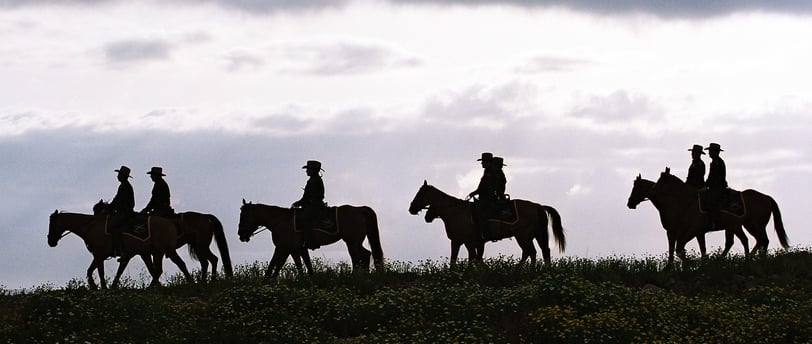A Historic Cross-Border Rivalry: Sports Franchises and Cultural Identity Between Oklahoma and Texas
A Historic Cross-Border Rivalry: Sports Franchises and Cultural Identity Between Oklahoma and Texas. the Oklahoma–Texas rivalry stands as a testament to the power of sport to mirror, challenge, and reinforce regional identities
ENTERTAINMENT
Camapa Editorial
12/18/20243 min read


In the realm of American sports, few regional rivalries are as deeply entrenched and culturally resonant as that between the states of Oklahoma and Texas. While this rivalry dates back well before the introduction of professional leagues to the region, its legacy in sports culture has become a prominent marker of identity, pride, and at times, animosity. Over the course of the twentieth and twenty-first centuries, teams from both states—whether collegiate powerhouses or professional franchises—have come to embody broader narratives of regional distinction, historical memory, and inter-state competition.
Historical Foundations and Cultural Underpinnings
The roots of the Oklahoma–Texas rivalry extend far beyond the playing fields. In the late nineteenth and early twentieth centuries, differing economic structures and cultural milieus began to shape distinct state identities. Texas, historically associated with its sheer geographical size, oil wealth, and a frontier mentality, developed a reputation for self-assured swagger. Oklahoma, forging its identity from the legacy of Native American territories, agrarian communities, and the Dust Bowl era, stood as a region of resilience and a relentless pursuit of recognition. These historical and cultural layers set the stage for competitive interactions, with sports emerging as a highly visible and emotionally charged arena through which to contest and affirm collective self-images.
The Collegiate Battleground: The Red River Showdown
Long before professional teams inhabited the spotlight, college football established the most iconic rivalry between the two states: the annual Red River Showdown between the University of Oklahoma Sooners and the University of Texas Longhorns. Played on a neutral field in Dallas since the early 1920s, the game has transcended the boundaries of athletics, symbolizing deeply embedded notions of state pride. The Sooners, representing a state often perceived as an underdog, have consistently challenged the Longhorns, associated with the swagger and resources of Texas. Both teams have produced legendary coaches, Heisman Trophy winners, and national championship contenders, elevating the game into a spectacle that commands national attention.
This collegiate tradition, fueled by decades of storied matchups, continues to influence contemporary sporting cultures in both states. The intensity and pageantry surrounding the Red River Showdown serve as a template for other rivalries, instilling in the institutions’ supporters an enduring sense of urgency, passion, and cultural connectedness.
Professional Franchises and Regional Dynamics
The rivalry did not remain confined to the college gridiron. By the late twentieth century and into the twenty-first, professional sports franchises began to shape the sporting landscape of Oklahoma and Texas. In the National Basketball Association (NBA), the relocation of the Seattle SuperSonics to become the Oklahoma City Thunder in 2008 introduced a new source of competition. Almost immediately, the Thunder and the Dallas Mavericks of Texas developed a fierce on-court rivalry, especially during playoff encounters in the early 2010s. This rivalry not only showcased elite athletic competition but also reflected divergent socio-economic narratives and fan cultures: while Dallas, part of a massive metropolitan hub, prided itself on global connectivity and established sporting traditions, Oklahoma City’s smaller market identity highlighted local authenticity and grassroots fervor.
Similarly, tensions have emerged between the states’ teams in other professional leagues. Although Oklahoma does not boast the breadth of professional franchises that Texas does, the presence of the Thunder in the NBA and various minor-league affiliates in baseball and hockey has helped foster a sense of parity. Texas, home to the Dallas Cowboys and Houston Texans in the NFL, as well as multiple MLB and NBA teams, often uses its widespread sporting influence as both a point of pride and a benchmark to overshadow regional neighbors. Yet for Oklahoma fans, the proximity and historical tension with Texas provide an opportunity to assert their own cultural narrative on a national stage.
Media, Economic Factors, and Fan Engagement
Beyond the field of competition, the Oklahoma–Texas rivalry thrives on the interplay of media coverage and the economic underpinnings of sport. Regional media outlets, sports talk radio, and digital forums have amplified and crystallized these rivalries, framing each new game or playoff series as a chapter in a storied saga. The economic stakes of these contests—through television contracts, merchandise sales, and tourism—reinforce the rivalry’s enduring importance. Additionally, the passionate involvement of fan bases, from families who have rooted for one side for generations to recent transplants who adopt local loyalties, ensures that this rivalry continues to evolve and diversify.
Evolving Contexts and Future Implications
As demographics shift, media consumption changes, and collegiate and professional landscapes undergo realignments, the nature of the Oklahoma–Texas rivalry will undoubtedly transform. The planned movement of college athletic programs between conferences, possible expansions in professional leagues, and the rise of digital sports communities all play a role in shaping the future. Even as broader social and political changes temper or redirect certain animosities, sport’s capacity to encapsulate cultural identity and historical consciousness suggests that the rivalry, in some form, will endure.
In this evolving narrative, the Oklahoma–Texas rivalry stands as a testament to the power of sport to mirror, challenge, and reinforce regional identities. Whether it unfolds in the thrumming atmosphere of a sold-out football stadium or on the polished hardwood floors of an NBA arena, it remains a living drama—a story of neighbors and rivals whose collective histories, ambitions, and aspirations collide in the timeless struggle for supremacy.
Camapa Editorial
camapaeditorial@gmail.com
© 2024. All rights reserved.
Our mission at Camapa Editorial is to explore, analyze, and present insights within these fields in a way that both educates and inspires further inquiry. Whether delving into groundbreaking scientific discoveries, examining the intricacies of athletic performance and emerging sports, or exploring the multifaceted world of entertainment, Camapa Editorial aims to be a trusted guide in your journey of learning and exploration.
